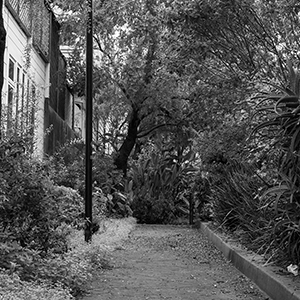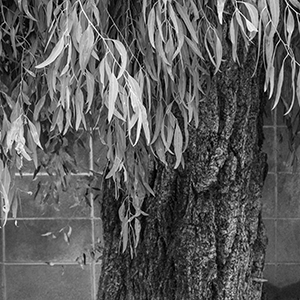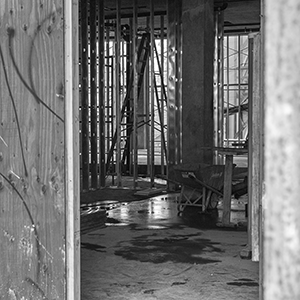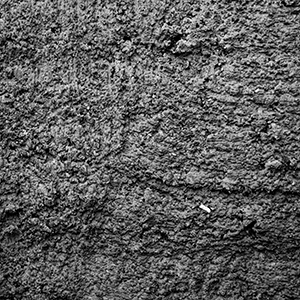Photo Corners headlinesarchivemikepasini.com
![]()
A S C R A P B O O K O F S O L U T I O N S F O R T H E P H O T O G R A P H E R
![]()
Reviews of photography products that enhance the enjoyment of taking pictures. Published frequently but irregularly.
Avoiding 'The Chair'


18 January 2013
The common office chair has been identified as the primary reason most photographs are never taken. Its almost magnetic attraction keeps mesmerized photographers tethered to desks and tables in cubicles and offices instead of out wandering in the wild.

Sans Chair. A walk begins with a path.
Recently research at our research labs here at Photo Corners, a long unheralded facility, has led to the discovery of a novel method of escaping the chair (gas-assisted, folding or electric).
But, as with much of our research, we don't know when to stop. Getting out of the chair is really only the first move (no, not even a step) toward taking more photographs.
We're delighted to be able to share our findings here. Exclusively.
ACROBATICS
Escape from any chair, it turns out, requires a series of low-kinetic, acrobatic maneuvers that, fortunately, do not require either assistive devices or protective gear, making them suitable for almost everyone.
To begin, make sure both feet are flat on the ground directly below their respective knees. Other positions, many of which have been extensively tested, are not guaranteed to succeed.
Put each hand on the closest knee. On top of the closest knee.
Then extend the head forward, lowering it until it is forward of the knees. Take advantage of the opportunity to confirm your shoes are tied. You will notice at the same time a somewhat magical levitation of the buttocks, which should not be discouraged.
At this point, you should notice some tension in both the shoulders and the elbows, extending as far as the wrists. This is normal.
Keeping the head far forward, release that tension by straightening the arms. As you do, notice the shoulders will naturally begin to pull back and the hips start forward as your body straightens into what is commonly known as the standing position.
To achieve full standing height, release your hands from your knees when your arms are fully extended.
This acrobatic maneuver separates you from the seat of the chair into a standing position. It remains only to put one foot in front of the other to achieve a walking action.
WALKING
While some authorities believe sitting is so bad that standing is sufficient exercise, our research shows that mere standing wears so badly on the knees that it can't be recommended. In fact, to the extent one might be considered obese, standing is contraindicated. Sitting would be preferred, were it up to the knees.

Eucalyptus. In a parking lot.
Research widely reported on flat screen TVs suggests that humans are actually designed to prosper with some small degree of stress while traversing an average of eight to ten miles per day on foot.
If, by some accident, you average a one-hour stroll every day, you're doing half of that.
But as photographers, the full two hours isn't hard to achieve. It simply requires some props.
GEAR
Your first steps should lead you to your camera collection. Unfortunately, except for a brief time during apprenticeship, camera collections are too extensive to encourage any useful activity. Most cameras in a collection lie dormant, encouraging the photographer to follow suit [citation needed].
To avoid this effect, it is recommended you pick up your oldest camera that lets you control ISO, aperture and shutter speed while shooting both Raw and JPEG images. Not only has a lot of excellent work been down with such machines, none of it has been redone by later models.
Partly this is the result of a lack of familiarity with the unadvertised limitations brand new gear. It typically takes five years to become comfortable with a camera, by which time its faults are appreciated and it is usually paid for. And yet, just at that perfect moment, most photographers abandon the device for something else they won't understand for five years.
Assuming sufficient battery power, avoid any sort of camera bag or conveyance. These just discourage actual use. You aren't transporting the camera. It's transporting you.
At most, indulge in a shoulder or wrist strap. But nothing fancy that may show up on a credit card statement. The one that came with the camera is often sufficient if not ideal. A mere cord can be adapted to secure the camera to your wrist. The goal is simply to prevent accidental separation of the camera from your hand. Particularly when abroad.
If it happens to be bright enough outside that you've elected to protect your eyes with sunglasses, put a circular polarizer on the lens, too. This doesn't protect anything but it promises to make the capture resemble what you saw. Failure to outfit the lens appropriately can ruin the whole expedition for you.
One thing you won't need is a pedometer. These nuisances require calibration with an ICC profile to effectively calculate the distance you've traversed. But the accuracy of the calibration depends on how carefully you report your stride and this can be a humiliating exercise for many. The preferred measure is time. Your medical professional will suggest 20 minutes but consider their vested interest in complications and extend that to at least an hour and preferably two, as we've pointed out.
Whatever you can afford, just go. Put that other foot in front of the first.
HOW TO WALK
Whether it is your domicile or working environment or both, leave the building. Lock the door if it is the custom in your neighborhood. A couple of knee bends may serve to deliver a blood supply to the legs in advance of any urgent need.

Under Construction. Detours are OK.
Under no circumstance pause to light a cigarette. Or cigar. Or pipe. As a photographer with a camera in your face, it isn't the usual practice. Still, it can't be emphasized enough. You need unobstructed vision and a clear path to your lungs if you plan to return to the building. Resort to dry ice if you need smoke.
Posture is important. If you notice the camera swinging wildly from side to side, consider what role your posture may be playing in that deviance. Are you hunched over, perhaps attempting to climb a hill? Are you a bit wobbly, your balance shifting a bit too far to the side with each step? Correct the situation promptly. Observing yourself in (parked) car or shop windows can be helpful in this sense, anyway. Otherwise it is not recommended.
Try not to think. Yes, there are bills to pay. There are birthdays coming up. There are promises that have been made. Forget all of that. Your job is simply to look around. To notice the light. To see how it draws shadows. Well, you know the routine.
Shoot as necessary. If you find yourself out of breath, it's necessary. Stop, turn around, look up, find a subject, focus, fire. Catch your breath. Continue. Walking is a cumulative exercise. There is no penalty for stopping frequently.
HAZARDS OF WALKING
On the subject of strollers and dog walkers, there is very little scientific evidence.
While most infants to whom you are not related are harmless, the same can not be said about the driver of the stroller. Note that these are rarely related to the infant either but employed to push them around out of earshot. Note also that the stroller pusher is often not old enough to drive or would already be in a car. So take care to give them a particularly wide berth. It will rarely be sufficient.
Check your settings. Confirm the image quality settings, the ISO, whether you have to worry about aperture and shutter speed.
That's due, undoubtedly, to their distraction with a small color screen often mistaken as a communication device or, even worse, a camera. They, like the dog walkers, are not photographers. If they were photographers, they could not afford either a data plan or a dog. They would be sinking their cash into LED lighting, miracle lenses, software suites and other tools of the trade.

Street 'Crete. Interrupted by a butt.
All dogs are vicious beasts to anyone other than their owners, who always assert, "Oh, he won't bite." They persist in the delusion that they can discuss things reasonably with their pet. "Stop that, Blue." Do not expect Blue to stop snarling at you and shake hands. Or roll over and play dead. Blue understands you are there to capture things and will have none of it. You are a photographer and move much less quickly than a car. You taste better than a rubber bumper, too.
Do not avoid hills. Hills are good for the abs. They do, unfortunately, shorten vision substantially, so it is unlikely you'll take anything other than macro photographs as you ascend. But the ascent can be so taxing that controlling your breath during a handheld macro exposure isn't practical.
But descending, too, is taxing. What ascending demands of the abs, descending demands of the gluteus maximus. And the heels.
Foot pain requires a chapter of its own, certainly, but the common advice to wear shoes is well observed. The shoes should be of the walking variety rather than dress although stilettos might seem to offer an advantage on hill ascents. Arch-supporting inserts are well recommended as well. Otherwise you may have to resort to a variety of non-prescription pain killers which, unlike inserts, are not reusable.
RETURNING
You are not required to take any photos at all on this walk. You may return home without ever pressing the shutter button. You may return by virtue of completing a circuit or turning around and coming back or by calling a cab or hoping on a bus.
You will not likely return home if you turn into a bar or cafe. Not for quite some time, anyway. Although both have their consolations, neither is recommended if you have anything worthwhile on your memory card.
You'll want to return to upload your captures and consider them at leisure while sitting in your comfortable office chair where, with any kind of luck, you can lean back, put your feet on the desk and take a nap.
(NB: Before beginning any kind of strenuous exercise other than reading, consult your physician or other health care professional. -- Editor)